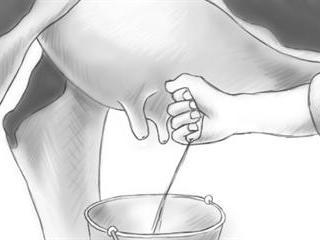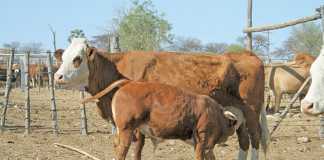
Photo: Austin Rossouw
Like many of our readers, you can probably say, “I know how to milk a cow – I’ve been milking cows all my life!” The trouble, though, is that like most people, you might have developed bad milking techniques and habits. This was the case with one of our readers, a small-scale farmer from North West.
READ Hygienic hand milking
Milking techniques and top tips
He wrote in to say he had to “re-train” his teenage son and daughter to milk because, in his words, “they got lazy over the years”. Correct milking techniques are essential for good udder health. So, to finish off our series on the udder, let’s take a closer look at milking.
Getting enough milk
How can you be sure your cow is giving you as much milk as possible? Here are the answers: health, comfort and calmness.
- Health
A healthy cow will almost always produce more milk than an unhealthy cow. So watch your cows carefully for any sign of disease or stress. If you see anything that looks wrong, speak to your vet or animal health practitioner immediately. And don’t forget to vaccinate your animals. - Comfort
A cow needs plenty of food and water, as well as shelter against heat, rain and cold wind. If the cow is too cold, she will shiver and use up energy to keep warm, and as a result, will produce less milk. And if she’s too hot, she’ll lose her appetite and also give less milk. - Calmness
If you shout, beat or hurt your cow in any way, she’ll become frightened and distressed, and will produce less milk. Stay calm and treat the cow gently, and you will get more milk from her.
Good hygiene
It’s essential that the kraal and milking area are kept clean. If these areas are wet and dirty, they become breeding places for disease. The cows, too, should be cleaned before they are milked. Begin by brushing their sides. Then wash their udders and teats with warm water and dry them with a clean paper towel.
Cut off any long hairs near the teats. To make sure the milk stays clean, keep your fingernails clean and short, wash your hands well before you do any milking, and avoid spitting or coughing near the milk. There should also be no open sores on your hands.
READ Hands-on dairy training
Regular
Cows become used to being milked at set times every day, so stick to this routine as closely as you can. Milking the cows even half-an-hour earlier or later can mean less milk and cream.
Checking
To check for mastitis, milk the first spurt from each teat through a piece of black nylon stocking over a bucket. If the cow has mastitis, the milk will either have lumps or be watery. This milk must not be used and the bucket should be properly cleaned. A cow that has mastitis must be marked and receive treatment immediately. She should always be milked last.
Correct milking techniques
- Hold your forefinger and thumb near the top of the teat and gently slide them down, but without pulling on the teat. This is called ‘stripping’ and is used for the first spurt of milk.
- Thereafter, take the whole teat in your hand, holding your thumb and forefinger around the top. Then gently squeeze your fingers, starting from the top and squeezing each finger in turn. Release your thumb and forefinger and repeat. This action – called ‘expressing’ – copies the way a calf takes the whole teat in its mouth and sucks it. If the cow does not suckle her calf, all the milk must be expressed.
- When the milk has been drained from the udder, strip the teat for the final spurt of milk. Use a good lubricating ointment for the stripping action on the first and last spurt. Otherwise, there is no need for any lubrication. Never tug on the teat. This damages it, is uncomfortable for the cow and can even cause mastitis. Also, never squeeze out the milk between your thumb and fingers – this can damage the upper part of the teat, hurt the cow and reduce milk flow.
Afterwards
After you have emptied the milk bucket and milk can, rinse them with cold water and then with very hot (ideally boiling) water in which washing soda (sodium carbonate) has been dissolved (half-a-cup in 10l of water). If the water in your area is not clean, add two tablespoonfuls of Jik to 10l of water, and let this stand for 10 minutes.
You can then use this to wash the milk bucket and milk can. After you’ve cleaned the bucket and can thoroughly, place them upside-down to drip-dry. Wash all cloths with soap after each milking, rinse them well and leave them to soak in Jik water so that all germs are killed.
Source: adapted from Hand-milking of Cows, prepared for the Western Cape department of agriculture by D Venter of the milk control laboratory at the Cape Institute for Agricultural Training: Elsenburg.
This article was originally published in the 16 March 2012 issue of Farmers Weekly.












